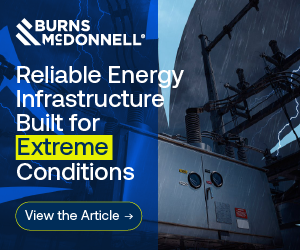Eye-popping nuclear costs portend rising leverage.
Michael T. Burr is Fortnightly’s editor-in-chief. Email him at burr@pur.com.
When Progress Energy announced in March 2008 that the expected cost had tripled for its proposed two-unit, 2,200-MW nuclear plant in Levy County, Fla., the company called on the state’s highest-ranking proponent of nuclear energy to blunt negative reaction to the news.

“This investment in Florida’s future is important to make,” Gov. Charlie Crist told reporters. “It will ultimately result in lower costs for customers because of the rising costs of oil and natural gas.”
Despite this brave face, however, price tags for new nuclear plants have reached intimidating levels. The Levy County plants, originally expected to cost around $5 billion, are now priced at between $15 billion and $17 billion—with future inflation still possible.


